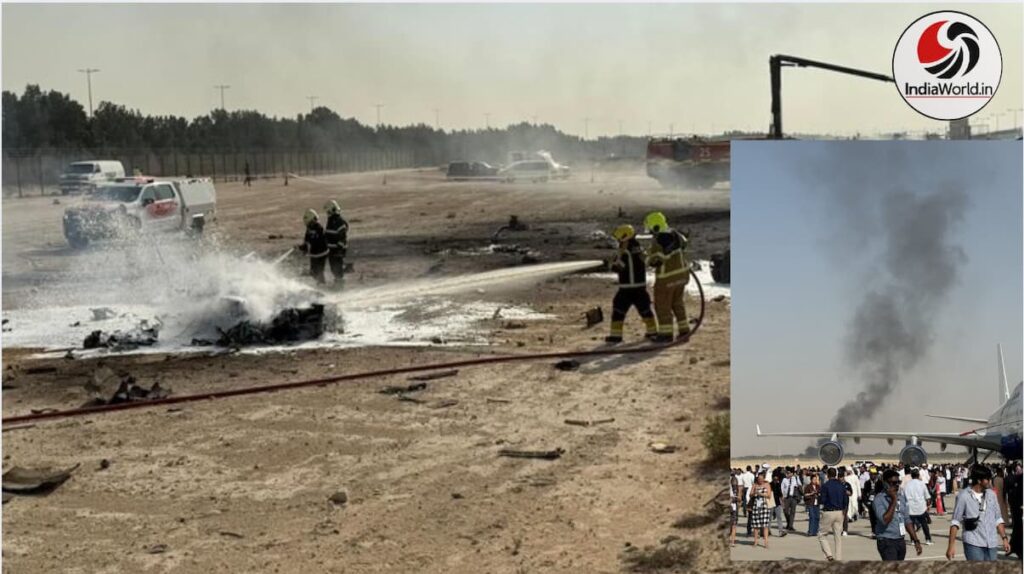Negative G Manoeuvre Explained: What Happened Before Tejas Crash in Dubai
The Dubai Airshow Tragedy
The Tejas crash in Dubai has shocked aviation enthusiasts and defense watchers worldwide. The Light Combat Aircraft (LCA) Tejas, India’s pride in indigenous fighter jet development, went down during a high-speed aerobatic display. According to initial assessments, the pilot was executing a negative G manoeuvre before the aircraft suddenly lost altitude and slammed into the ground.
The Indian Air Force (IAF) confirmed the pilot’s death in a statement on X, marking a tragic moment for India’s aviation history.
What Is a Negative G Manoeuvre?
In aviation, negative G forces occur when the aircraft experiences acceleration opposite to normal gravity. Instead of being pressed into the seat, the pilot feels lifted out of it.
- When it happens: During aerobatic manoeuvres, sudden descents, or turbulence.
- Effects on pilots: Blood rushes to the head, causing disorientation, blurred vision, or even loss of consciousness.
- Training: Fighter pilots undergo rigorous training to withstand both positive and negative G forces.
Unlike positive G (where blood pools in the lower body), negative G is harder to manage because the human body is less tolerant of blood rushing upward.
What Went Wrong in Dubai
Videos from the airshow show the Tejas completing a loop manoeuvre before attempting to regain level flight. During this transition, the jet appeared to lose altitude rapidly. Aviation experts believe the negative G turn may have destabilized the aircraft, leaving little margin for recovery.
While only a detailed investigation will confirm the cause, possibilities include:
- Pilot disorientation due to extreme negative G.
- Fly-by-wire system overload while correcting instability.
- Mechanical or control failure during the manoeuvre.
Tejas: India’s Agile Fighter
The LCA Tejas, developed by Hindustan Aeronautics Limited (HAL), is India’s answer to lightweight, agile fighter jets. It entered service in 2016 and quickly became the IAF’s frontline replacement for the aging MiG-21 fleet.
- Agility by design: Tejas is intentionally unstable to allow sharper manoeuvres.
- Fly-by-wire system: A sophisticated flight computer constantly adjusts controls to keep the jet stable.
- Safety record: Until 2024, Tejas had one of the best safety records in the IAF, with only one crash in 23 years.
The Dubai crash is only the second accident in Tejas history, making it a rare but devastating event.
Past Tejas Crashes
- March 2024, Jaisalmer (Rajasthan): First Tejas crash during a routine sortie.
- November 2025, Dubai Airshow: Second crash during aerobatic display.
Compared to other fighter jets, this record is still considered strong. For example, the MiG-21, once the backbone of the IAF, suffered over 400 crashes in its service life.
Global Comparisons
Tejas is not alone in being designed with controlled instability. The American F-16 Fighting Falcon also relies on fly-by-wire systems to remain stable. This design philosophy allows jets to perform extreme manoeuvres but requires flawless computer assistance.
- F-16: Known for agility but has faced accidents during airshows.
- Eurofighter Typhoon & Rafale: Similar unstable designs for manoeuvrability.
This shows that the Dubai crash is not unique to Tejas but part of the inherent risks of modern fighter design.

The Human Factor
Pilots are trained to handle positive G forces with anti-G suits and breathing techniques. But negative G is trickier:
- No specialized suit exists.
- Recovery time is shorter.
- Even experienced pilots can lose control if manoeuvres are miscalculated.
Experts suggest the Tejas pilot may have faced spatial disorientation during the manoeuvre, leaving little time to correct altitude loss.
Why This Crash Matters
The Tejas program represents India’s push for self-reliance in defense technology. Every crash raises questions about safety, training, and system reliability.
- For India: A reminder of the challenges in indigenous fighter development.
- For aviation: A case study in the risks of negative G manoeuvres.
- For the public: A tragic moment highlighting the bravery of fighter pilots.
What’s Next for Tejas
The IAF and HAL will conduct a court of inquiry to determine the exact cause. Possible outcomes:
- Software upgrades to fly-by-wire systems.
- Enhanced pilot training for negative G manoeuvres.
- Operational restrictions during airshows until safety is assured.
Despite the crash, Tejas remains a cornerstone of India’s air defense strategy.
📚 Learn More
For readers curious about aviation and Tejas:
- LCA Tejas – Wikipedia
- Indian Air Force Official Website
- HAL Official Website
- Quora Discussions on Fighter Jets
- Reddit r/aviation
✅ Read also || Strong tremors felt in Kolkata after Bangladesh earthquake
📢 Call to Action
Join our Arattai Group: aratt.ai/@indiaworld_in
👉 Telegram Channel: t.me/indiaworld_in
📰 Visit IndiaWorld.in for:





